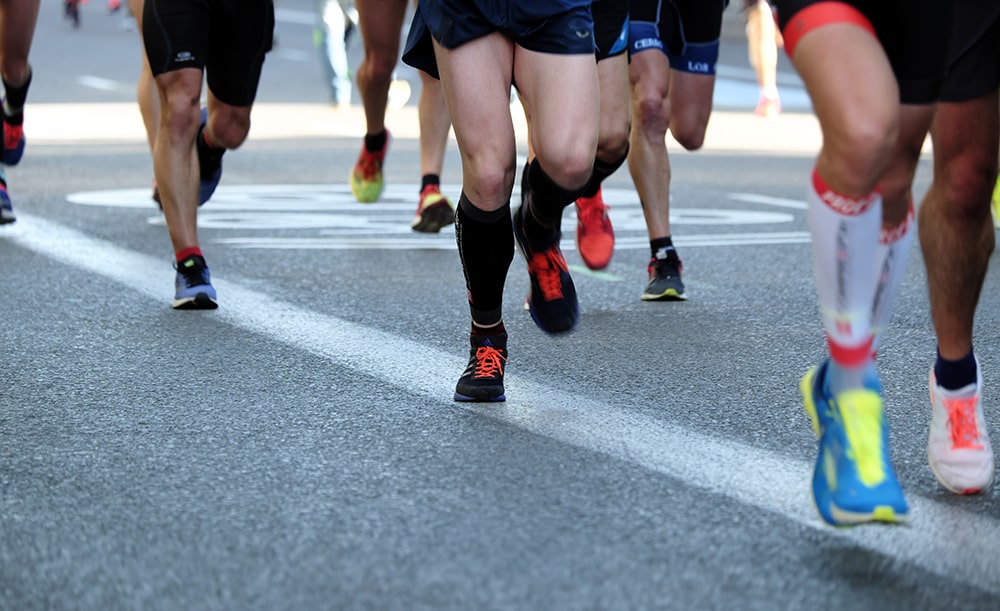Download and print the injury report form here.
Overview
Medial Tibial Stress Syndrome (MTSS), commonly known as shin splints in the general public, is an exercise-induced nagging dull ache along the lower inner shin (approximately 2 centimetres in length). It is one of the most common complaints of the lower leg in the athletic population, and an incidence ranging between 4 and 35%. This condition most commonly affects runners and those athletes whose sports involve running such as soccer, basketball, long jump and tennis.
What Causes MTSS?
The cause of MTSS is controversial and there are many theories. Some researchers believe it is the micro-tearing of the deep calf muscle, called the soleus, away from the shin bone, causing inflammation. Others suggested that MTSS is a consequence of repetitive stress imposed by impact forces that eccentrically fatigue the soleus which creates repeated tibial bending or bowing, in turn overloading the bone-remodelling capabilities of the tibia. In simple terms this theory suggests that MTSS is related to mechanical overloading of the bone. Lastly, Messier and Pittalai showed that not only was increased pronation significant in participants with MTSS, but the maximum velocity of pronation (how quickly one slams their foot into prontation) had a greater correlation in those with MTSS than did pronation alone.
What Are the Risk Factors of MTSS?
The proposed risk factors of MTSS are:
- Increased foot pronation
- Increased muscular strength of the plantar flexors
- Increased varus tendency of the forefoot or hindfoot (or both)
- An abrupt increase in training intensity
- Inadequate calcium intake
- Hard or inclined running surfaces (or both)
- Inappropriate or old inadequate footwear
- Previous injury
- Female
- Increased BMI
- Increased calf girth
- Greater internal and external hip range of motion
- Inversion / eversion strength imbalance
- Static navicular drop and dynamic velocity
How Can I Treat MTSS?
Treating MTSS can be challenging due to the fact that we still do not know exactly what causes it. However, understanding the sport and assessing for potential risk factors can help guide treatment. There are various treatment options that can be prescribed by your chiropractor or physiotherapist. Listed below are treatment options that can be performed by your health care provider after an assessment to ensure your treatment is specific to your injury.
- Ice
- NSAIDS (anti-inflammatory medication)
- Stretching (limited evidence)
- Active Release Technique (ART)
- GRASTON technique
- Sport compression socks (may provide direct compression on the tibia/shin through the surrounding soft tissues, especially during intermittent loading)
- Electro-Acupuncture
- Shockwave therapy
- Strengthen exercises for the legs
- Graded running program
MTSS is a tricky condition that may linger for weeks or months. Do not ignore the symptoms because the earlier you receive treatment the quicker you will heal.
References
- Moen MH, Holtslag L, Bakker E et al. The treatment of medial tibial stress syndrome in athletes; a randomized clinical trial. Sports Medicine, Arthroscopy, Rehabilitation, Therapy & Technology. 2012, 4:12.
- Moen MH, Rayer S, Schipper M et al. Shockwave treatment for medial tibial stress syndrome in athletes; a prospective controlled study. British Journal of Sports Medicine 2012;46:253–257
- Myofacial Needling for Treatment of MTSS. Functional Anatomy Blog by Dr. Spina
- Craig DI. Medial Tibial Stress Syndrome: Evidence-Based Prevention. Journal of Athletic Training 2008;43(3):316-318
- Tweed JL, Avil SJ, Campbell JA et al. Etiological Factors in the development of Medial Tibial Stress Syndrome. Journal of the American Podiatric Medical Association. 2008; 98 (2), 107-111.
- Moen MH, Tol JL, Weir A et al. Medial Tibial Stress Syndrome A Critical Review.. Sports Medicine. 2009. 39 (7).

